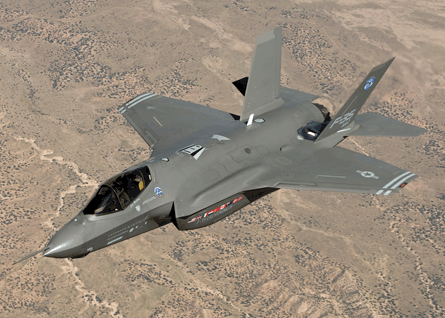Australia's long-awaited defence White Paper has committed the country to a massive modernisation programme. This includes the purchase of Lockheed Martin's F-35 Joint Strike Fighter, tactical transports, multirole and transport helicopters and maritime patrol aircraft.
Published on 2 May, the document says Canberra plans to increase its A$22.7 billion ($16.6 billion) defence budget by 3% a year until 2017-18, and then by 2.2% annually until 2030 to rectify current "shortfalls and underinvestment", says defence minister Joel Fitzgibbon.
Worth more than A$300 billion over the next 20 years, the commitment will come as music to the ears of foreign contractors and Australian suppliers, and enable Canberra to step up to contain possible future threats including China after the USA has reduced its military presence in the Asia-Pacific region.
"As the Asia-Pacific region becomes more prosperous, we will see an increase in the region's military capability," says Fitzgibbon. "Intra-state conflict will be an enduring feature in the period to 2030, and the Australian Defence Force needs to be prepared to play its part in dealing with such contingencies."
 |
|---|
© Lockheed Martin |
Air power is central to Australia's modernisation aims, and the government has maintained its plans to buy around 100 F-35s. It will order no fewer than 72 of the fifth-generation aircraft in the third quarter of 2009, by which time the developmental type's delivery schedule will have become clearer, the White Paper says.
A fourth squadron of JSFs will be bought later, based on the timing for the withdrawal of the Royal Australian Air Force's interim batch of 24 Boeing F/A-18F Super Hornets. To enter service from later this year, these will "remain effective until at least 2020", it says.
With airlift to also remain a vital element of Australian defence capability, the White Paper reveals that the RAAF is to acquire a further two Lockheed Martin C-130Js, increasing its fleet to 14. Up to 10 new battlefield transports will also be purchased to replace its remaining de Havilland DHC-4 Caribous.
To meet its maritime surveillance requirements, Australia will buy eight new maritime patrol aircraft and seven high-altitude, long-endurance unmanned air vehicles to replace its Lockheed AP-3C Orions. Canberra has already signed a memorandum of understanding to jointly develop an Australian variant of the US Navy's Boeing 737-based P-8 Poseidon.
Despite development delays, the RAAF will field six 737-based Wedgetail airborne early warning and control system aircraft from 2011, with the government to investigate upgrading these with Co-operative Engagement Capability equipment. This will "enable it to more effectively cue weapons systems and perform other functions in an air warfare information 'grid'," Fitzgibbon says.
In the rotorcraft sector, seven Boeing CH-47F transport helicopters will replace the army's current six CH-47Ds, with Fitzgibbon saying the Chinook will remain "a critical component of the Army Aviation fleet".
The Royal Australian Navy will get a further six NH Industries NH90 multirole helicopters to replace its Westland Sea Kings, plus at least 24 new naval combat helicopters equipped with dipping sonars and torpedoes. "This project will be pursued as a matter of urgency to overcome the current deficiencies in the navy's aviation fleet," says Fitzgibbon, referring to the government's cancellation of a previous deal for Kaman SH-2G(A) Super Seasprites.
Some commentators say Australia's plans will start an "arms race" in Asia, especially as they are targeted at countering China's massive military modernisation efforts and "blue water" naval expansion. Beijing swiftly criticised the White Paper, while Australian opposition leader Malcolm Turnbull says: "It makes no sense for Australia in 2009 to base its long-term strategic policy on the highly contentious proposition that Australia is on an inevitable collision course with a militarily aggressive China."
However, Paul Dibb, a former Australian deputy secretary of defence and the author of its 1987 defence White Paper, describes the new publication as a "hedging strategy", and counters: "You do not plan against incredible contingencies, such as a direct military threat from China, but you do prepare for contingent operations with your allies. And you do aim to be able to expand to defend yourself."
Others question whether it is realistic to outline force structure and funding plans out to 2030. "This is ambitious and not entirely convincing," says Richard Brabin-Smith, a visiting fellow at the Australian National University's Strategic and Defence Studies Centre. "Who knows how much of the nation's wealth future governments might want to spend on defence? And forward estimates of defence costs tend notoriously to undershoot."
Source: Flight International



















